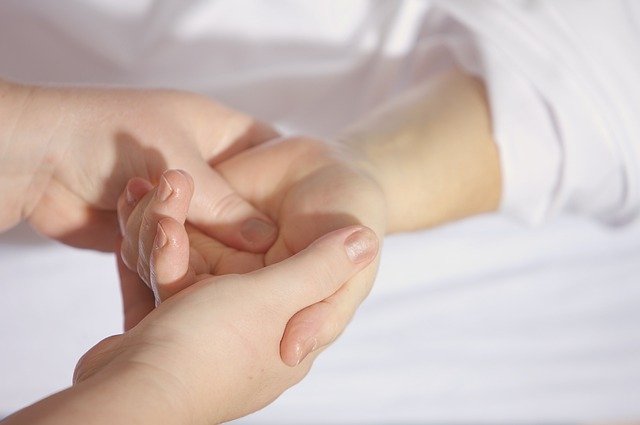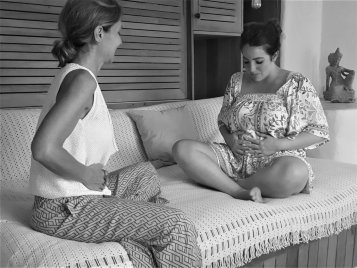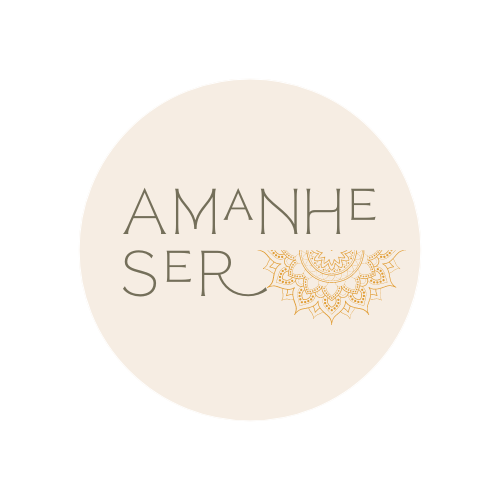What Is Osteopathy, Really? – An Introduction to a Frequently Misunderstood Healing Method

What Is Osteopathy?
To understand the term, let’s start with a common definition. According to Wikipedia, osteopathy is:
“…an independent, holistic form of medicine in which diagnosis and treatment are carried out using the hands. Osteopathy seeks to address the root causes of ailments and treats the person as a whole.”
That sounds promising – though admittedly, a bit broad. After all, other hands-on treatments like manual therapy or chiropractic care also use touch as a therapeutic tool. So does that mean they’re all the same?
Definitely not.
The Difference Lies in the Mindset – and the Method
Osteopathy, chiropractic, and manual therapy share the use of hands-on techniques. But what sets them apart is the underlying philosophy – their way of thinking, understanding, and approaching treatment.
Manual Therapy – Structural and Symptom-Focused
The word “manual” comes from the Latin manus, meaning “hand.” Manual therapy focuses on functional disorders of the musculoskeletal system – particularly joints, muscles, and nerves. It’s typically practiced by physiotherapists with specialized training and often follows a more symptom-oriented approach: the treatment targets the area where the pain occurs.
Chiropractic – Adjusting and Mobilizing
Chiropractic, from the Greek cheir (hand) and praxis (action), primarily addresses misalignments of the joints, especially in the spine. The aim is to release blockages and restore mobility through specific impulses – the well-known “crack.” The guiding principle: dysfunctions in the spine can impact the nervous system and lead to symptoms throughout the body.
Osteopathy – Seeing the Person as an entire individual
And now, osteopathy. The term comes from the Greek osteon (bone) and pathos (suffering). Its founder, Andrew Taylor Still, began his studies with the skeletal system but quickly realized the body is more than just a collection of parts.
In osteopathy, the human being is viewed as an integrated whole. Symptoms are not seen in isolation but as signs of deeper imbalances, dysregulation, or compensatory mechanisms.
The core principle? The body has an innate ability to regulate and heal itself – if given the chance.
Osteopaths work with a profound knowledge of human anatomy. Their focus extends beyond muscles and joints to include fasciae, internal organs, and the craniosacral system (skull and sacrum). Everything in the body is interconnected – and these relationships are central to osteopathic treatment.
That means treatment isn’t necessarily applied where the pain is felt, but where the underlying cause is suspected. Back pain, for example, might originate in the digestive system – and headaches might be rooted in the pelvis.
Osteopathy is much more than just “working with your hands.”
It is a philosophy—a holistic way of looking at the human being. It doesn’t simply ask, “Where does it hurt?” but more importantly: “Why does it hurt?”
At a time when many treatments aim for quick relief, osteopathy takes a different path: it listens—with the hands, with knowledge, and with attentiveness.
And it is precisely this that gives it its power.
Let’s take a short journey into the origins of osteopathy
It all began with the American physician Dr. Andrew Taylor Still (1828–1917). Dissatisfied with the conventional healing methods of his time—and shaken by the loss of his first wife and three of his children to illness—Dr. Still sought an alternative medical approach. He devoted himself to studying the anatomy and physiology of the human body.
During his practice, he noticed that many illnesses were linked to altered body mechanics. He realized that changes in the body’s mobility and structural alignment could impair both the affected tissues and the function of internal organs. He also observed a close interrelationship between structure and function, and from this understanding, he developed the concept of osteopathy.
Still’s therapeutic approach proved remarkably effective, and he gained a national reputation. Patients traveled from far and wide to seek his help.
In 1892, the first American school of osteopathy was founded in Kirksville, Missouri.
Osteopathy in Europe
In 1917, one of Dr. Still’s students, John Martin Littlejohn, D.O. (1865–1947), founded the British School of Osteopathy in England—Europe’s first osteopathic school. Osteopathy has been officially recognized in the UK since 1994. There, the training to become a Diploma in Osteopathy (D.O.) is a full professional qualification culminating in a university degree.
In France, osteopathy was officially recognized in 2002. In 2007, the title “osteopath” became a protected designation (Décret 2007-435 du 25 mars 2007).
Across much of Europe, osteopathy is now an established part of healthcare systems. Training typically spans five years.
Osteopathy in Brazil
In Brazil, osteopathy has also become part of the healthcare system, though it is still less well-known than in Europe. The training program was recently extended from three to four years, although variations in duration and curriculum still exist among institutions.
Osteopathy Around the World
There is no global standard for osteopathy—regulations vary widely from country to country. Professional recognition of osteopathy is at different stages of development worldwide. International associations continue to work toward better integration of osteopathy into healthcare systems globally.
How Does Osteopathic Treatment Work?
During their studies, osteopaths learn various techniques to detect and treat so-called dysregulations with their hands. To an outside observer, not much may be visible—it’s more like a silent dialogue between tissue and the practitioner’s hands.
The English term “listening” is often used in this context. It means to “tune in” or “pay attention”—not in a mystical way, but with trained sensitivity.
This is where critics sometimes associate osteopathy with spirituality or esotericism. And yes, I understand why. The movements are so gentle and subtle that they can hardly be seen. But think of it like this: you can’t see a pulse from the outside either, yet when you place your fingers correctly, you can feel it. It’s the same with many other signals the body gives us.
This is not something one can learn over a few weekends—it takes time and practice.
Take Traditional Chinese Medicine (TCM), for example. TCM uses pulse diagnosis, evaluating the pulse by its shape, depth, tension, and rhythm. An experienced practitioner can use this to assess the stage and progression of an illness.
In a similar way, the osteopath senses tissue quality throughout different regions of the body, forms hypotheses, and then applies appropriate techniques—most of which are also extremely gentle—to the relevant areas.
Osteopaths don’t always treat where it hurts. Because everything in the body is interconnected—like the gears in a mechanical clock—they may begin treatment in a seemingly unrelated area to relieve the symptoms.
Let’s Summarize: What is osteopathy?
Therapeutic bodywork
A manual therapy that uses only the hands.
Holistic approach
It views the body as a unit: structures (musculoskeletal system, organs, nervous system, arteries, fascia, etc.) and functions (movement, circulation) are interlinked, much like clockwork.
Balancing Body
The goal is to release movement restrictions and tensions that throw the body off balance.
Wide range of indications
It can help with a variety of functional complaints, such as back pain, headaches, digestive issues, chronic tension, and more.
Complementary medicine
In many countries, osteopathy is a recognized but not fully conventional medical practice.
Prevent, Support, Restore
Osteopathy offers more than just relief from discomfort — it supports you during pregnancy, helps prepare for birth, and promotes long-term health as a powerful preventative tool.
What osteopathy is not?
Not emergency medicine
It is not suitable for acute, serious conditions (e.g. heart attacks, fractures, infections).
Not esoteric
: Despite its holistic approach, reputable osteopaths rely on sound anatomical and physiological knowledge.
Not a “miracle cure”
Osteopathy supports healing but does not work for every person or every condition, and may require multiple sessions.
Clearing Things Up: Osteopathy Is Not Esotericism
While conventional medicine often follows a symptom-based approach, osteopathy aims for a holistic perspective. This includes not only the body as a system, but also lifestyle, diet, social environment, and psychological factors—anything that could potentially influence health.
At this point, let me cite the World Health Organization (WHO) definition of health:
“Health is a state of complete physical, mental, and social well-being and not merely the absence of disease or infirmity.”
Psychology, stress management, and nutrition are not part of formal osteopathic training. Yet, practitioners who embrace a truly holistic path know that there is more to health than anatomy and physiology.
A.T. Still also recognized that body, mind, and spirit are interconnected and form an inseparable unit.
It is a good thing that osteopathic training focuses deeply on one area—otherwise, we’d never finish studying. But that doesn’t mean one can’t expand their understanding afterward: What is the body trying to express with its symptoms? What lies behind them?
Holistic thinking doesn’t stop with complete anatomical knowledge. It means letting go of rigid categories—there are no fixed frameworks, because each person, each situation, and each system must be viewed individually.
Osteopathy invites us, in a world full of quick fixes, to pause — and listen. To see the body not as a collection of symptoms, but as a complex, intelligent system that strives for balance and health. With trained, achtsamen Händen (mindful hands), fundiertem Wissen (solid knowledge), and a genuine interest in your individual story, osteopathy offers a space to explore the why behind the what.
Whether you’re dealing with long-standing discomfort or simply want to support your overall well-being, osteopathy can be a valuable step on your journey toward lasting health.
Give your body the chance to tell its story — and let an osteopath help you listen.
Making an Appointment with us for a session
How It Works
01 Get in Touch
Reach out by phone, email, or through an online booking form — whatever’s easiest for you.
02 Choose a Day and Time
We’ll help you find a suitable date and time. If it’s your first visit, we’ll allow a little extra time for a full assessment.
03 Prepare for Your First Session
No special preparation is needed. Just wear comfortable clothing and bring any relevant medical reports or notes (if you have them).
04 The First Appointment
We'll begin with a detailed conversation about your health history, followed by a physical assessment and initial treatment. Based on your needs, we may recommend a follow-up schedule or self-care tips to support your recovery.

Have a Question or Want to Book?
Get in Touch!
Please fill out the form, so we can learn more about you and your needs.
